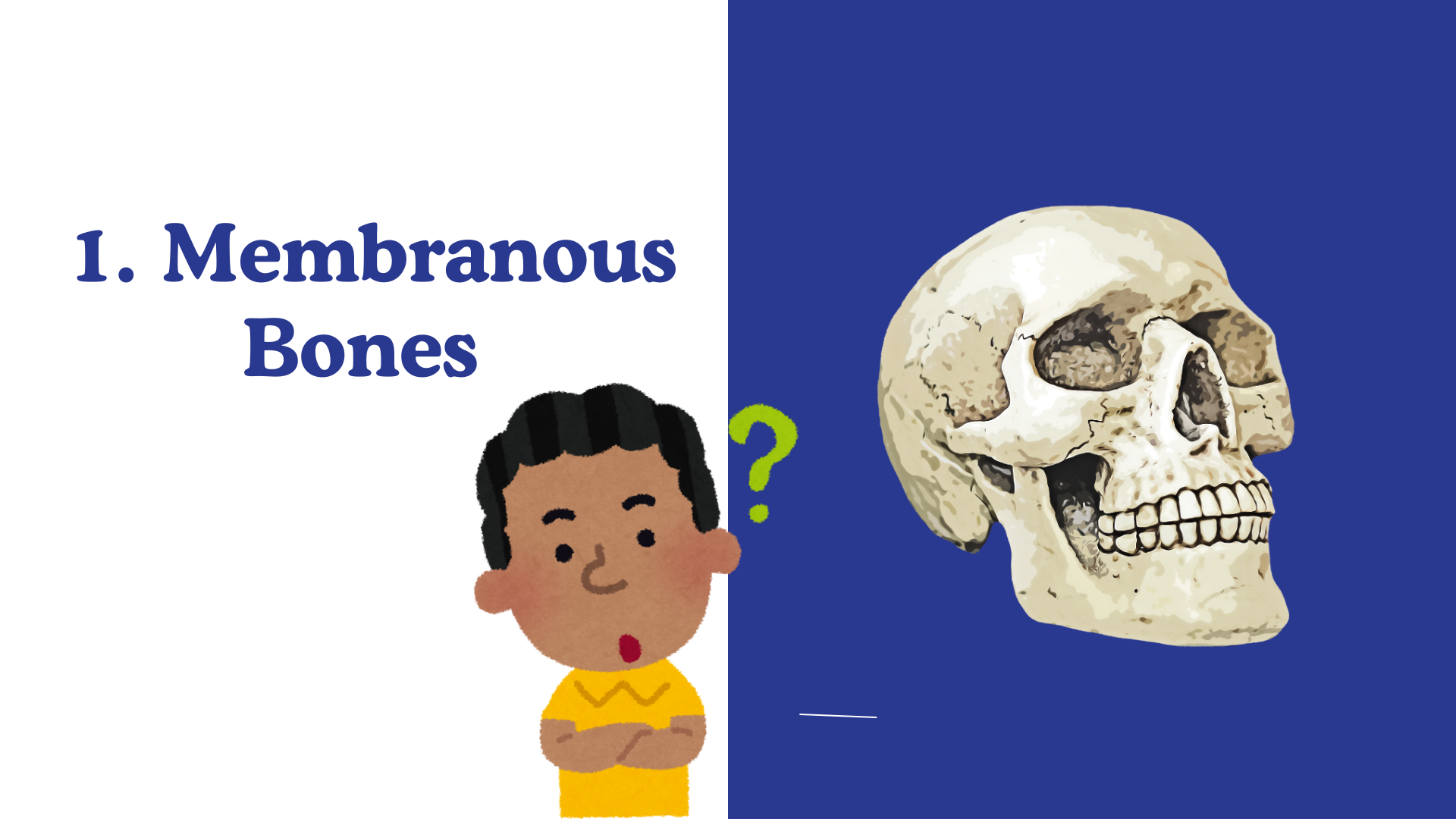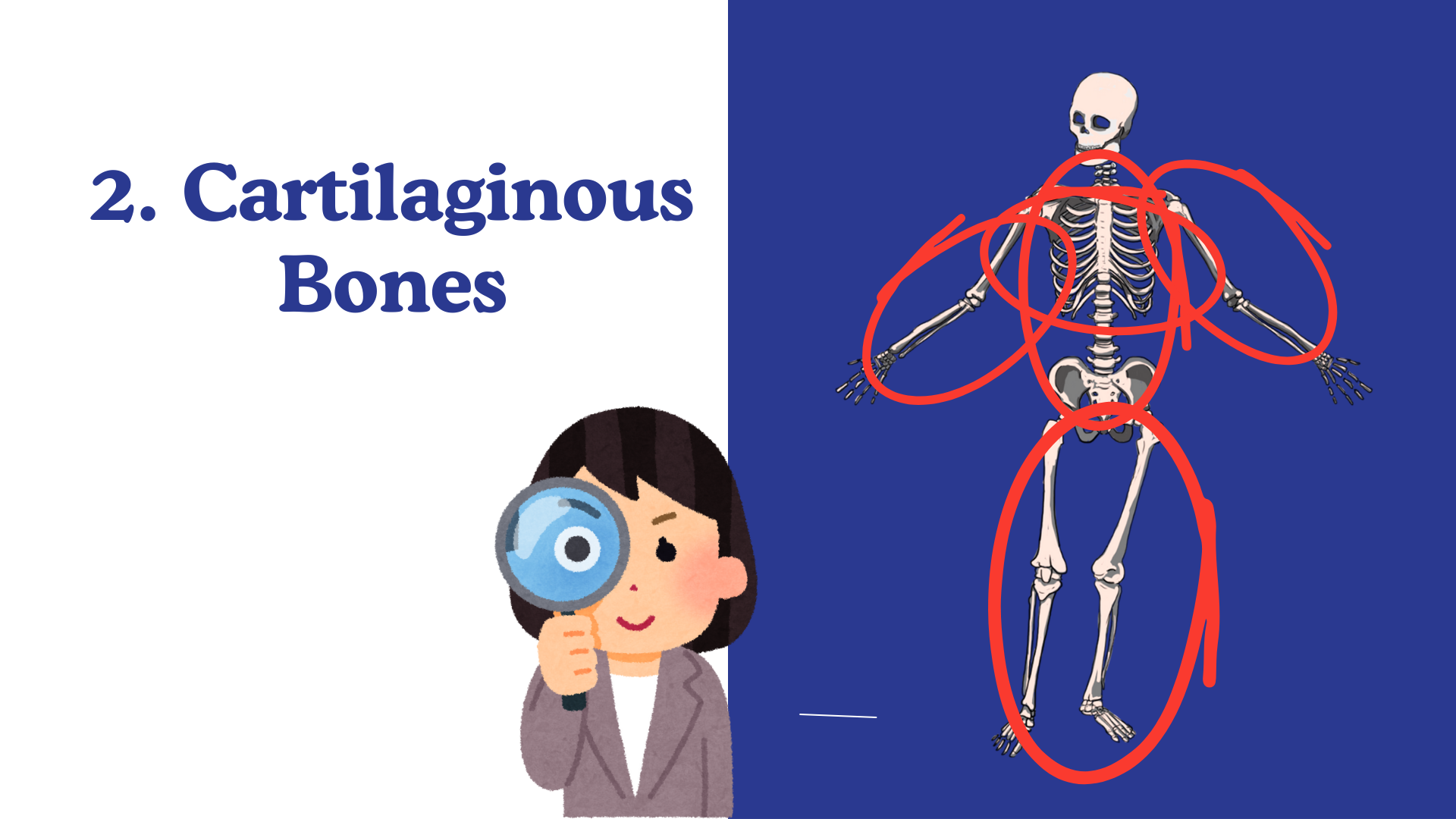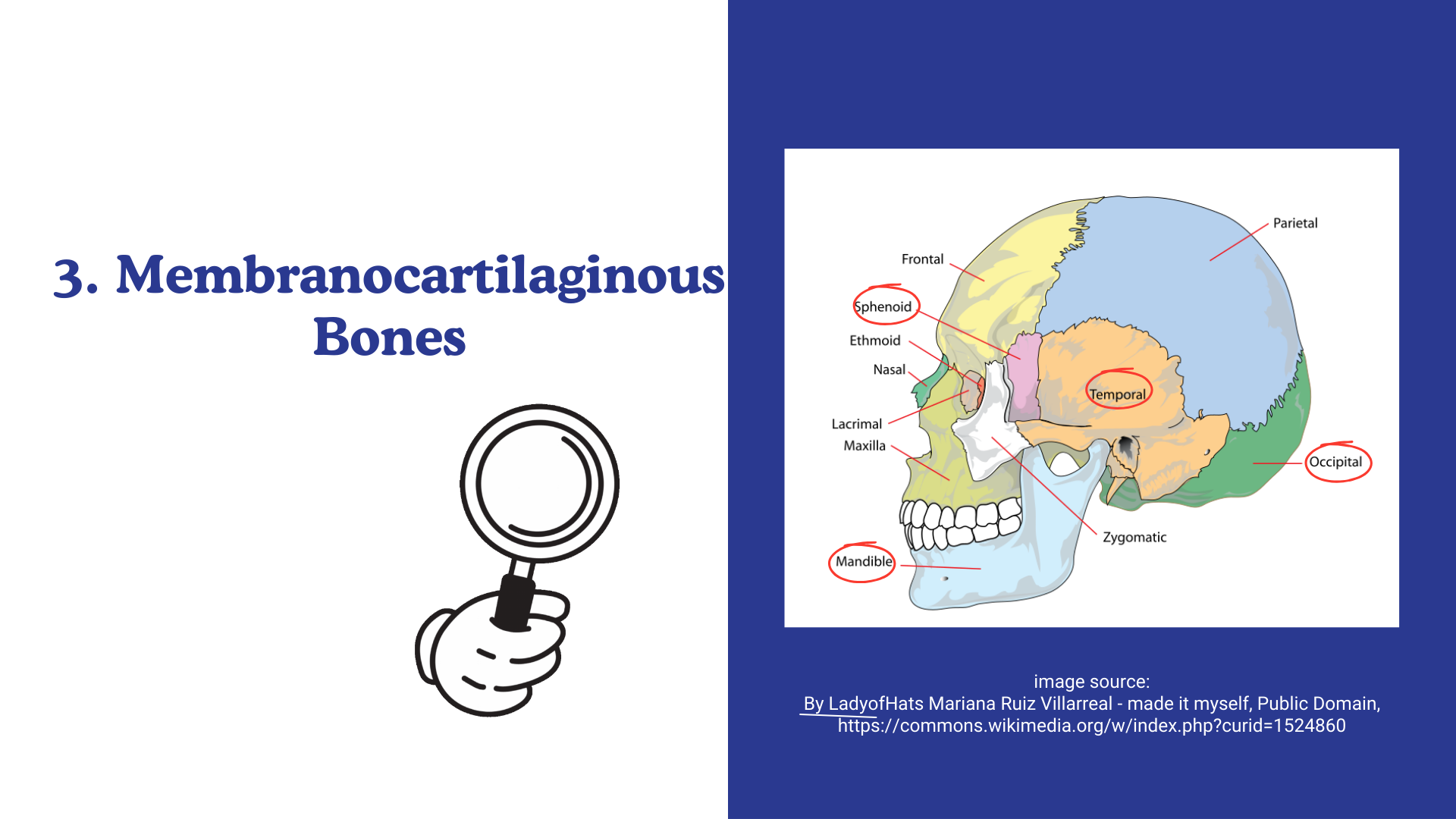Developmental Classification of Bones

Bone development during embryonic growth is a complex process that can be classified into three main categories based on their mode of development:
- Membranous Bones
- Cartilaginous Bones
- Membranocartilaginous Bones
Each type follows a distinct path in its formation, contributing to the overall structure of the skeleton.
1. Membranous Bones
Membranous bones are formed through the intramembranous method of osteogenesis. This process involves the development of bones within membranous sheets, which are created from the condensation of embryonic connective tissue, also known as mesenchyme.
Characteristics:
- Formation: These bones form directly from mesenchymal tissue without a cartilage precursor.
- Development: Osteoblasts (bone-forming cells) create bone tissue within these membranous sheets, which eventually ossify to form bone.
Examples of Membranous Bones:
- Flat Bones of the Skull Vault: Such as the frontal, parietal, and occipital bones.
- Facial Bones: Including the maxilla, zygomatic, and nasal bones.

2. Cartilaginous Bones
Cartilaginous bones develop through the intracartilaginous method of osteogenesis. These bones are formed within pre-existing models of hyaline cartilage, which gradually ossify to become bone.
Characteristics:
- Formation: Cartilage serves as a template for bone formation, with osteoblasts replacing the cartilage with bone tissue.
- Development: This method allows for the gradual and organized development of bones, particularly in the long bones and vertebral column.
Examples of Cartilaginous Bones:
- Vertebrae: The bones of the spinal column.
- Rib Bones: The bones forming the rib cage.
- Bones of Limbs: Such as the femur, tibia, and humerus.

3. Membranocartilaginous Bones
Membranocartilaginous bones develop through a combination of both membrane and cartilage methods. This process involves partial formation in membranes and partial formation in cartilage.
Characteristics:
- Formation: These bones have dual origins, starting with a cartilage model that undergoes ossification in certain areas, while other parts ossify from membranous tissue.
- Development: This hybrid development process contributes to the complex structure of certain bones.
Examples of Membranocartilaginous Bones:
- Skull Bones: Such as the temporal, occipital, and sphenoid bones.
- Mandible: The lower jawbone.
- Clavicle: The collarbone.

Conclusion
Understanding the developmental classification of bones provides insight into their formation and structure. Membranous bones form directly from mesenchyme, cartilaginous bones develop from cartilage templates, and membranocartilaginous bones arise from both cartilage and membrane sources. Each type plays a crucial role in the development and function of the skeletal system.